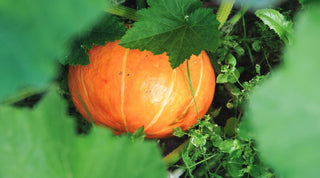A Moon Garden is a unique concept in landscaping, designed to be enjoyed in the moonlight. This type of garden primarily features white or pale flowers, along with plants that have silvery or variegated foliage. The idea is to create a space that glows under the moonlight, providing a tranquil and ethereal experience during the night hours.
How to Build a Moon Garden
Choosing the Right Spot:
The ideal location for a moon garden is an area that receives ample moonlight. Avoid heavily shaded areas where the moon's rays are obstructed.
Soil Preparation:
Like any garden, start by preparing your soil. Ensure it is well-draining and fertile. Adding organic matter can enhance the soil's quality.
Layout Design:
Consider a layout that allows easy navigation in low light. Pathways lined with light-reflective materials, like white gravel, can enhance the moonlight effect.
Plant Selection for Moon Gardens
White and Pale Flowers:
Choose plants with white or pale flowers that will reflect the moonlight. Some popular options include White Roses, Moonflowers, and Jasmine.
Silver and Variegated Foliage:
Plants with silvery foliage, like Lamb's Ear and Dusty Miller, or those with variegated leaves, also work well in moon gardens.
Night Bloomers:
Incorporate night-blooming plants, such as Evening Primrose or Night Phlox, which open or release their fragrance at night.
Planting Your Moon Garden
Planting Technique:
Plant in groups to create a more dramatic impact. Ensure taller plants are placed at the back and shorter ones in the front for visibility.
Mulching:
Use a light-colored mulch to reflect light and maintain soil moisture.
Watering and Maintenance:
Regular watering and maintenance will keep your garden thriving. However, avoid overwatering, as many moon garden plants prefer well-drained soil.
Moon Garden Benefits
Visual Appeal:
Moon gardens add an extraordinary beauty to your landscape, transforming it into a luminous nighttime wonder.
Sensory Experience:
The combination of night-blooming flowers and fragrant plants creates a unique sensory experience.
Wildlife Attraction:
These gardens attract nocturnal pollinators, like moths, which play a crucial role in the ecosystem.
Personal Well-being:
A moon garden is a place for relaxation and contemplation, helping to reduce stress and promote well-being.
Conclusion
Creating a moon garden is an enriching experience that extends the beauty of your garden into the nighttime. With careful planning and the right plant selection, you can develop a serene, glowing retreat that comes to life under the moon's light. Remember to consider the garden's layout, plant types, and maintenance needs. The benefits of a moon garden go beyond aesthetics, offering a unique sensory experience and contributing to environmental conservation. Start your moon garden project today and enjoy the magic of your nighttime oasis!



